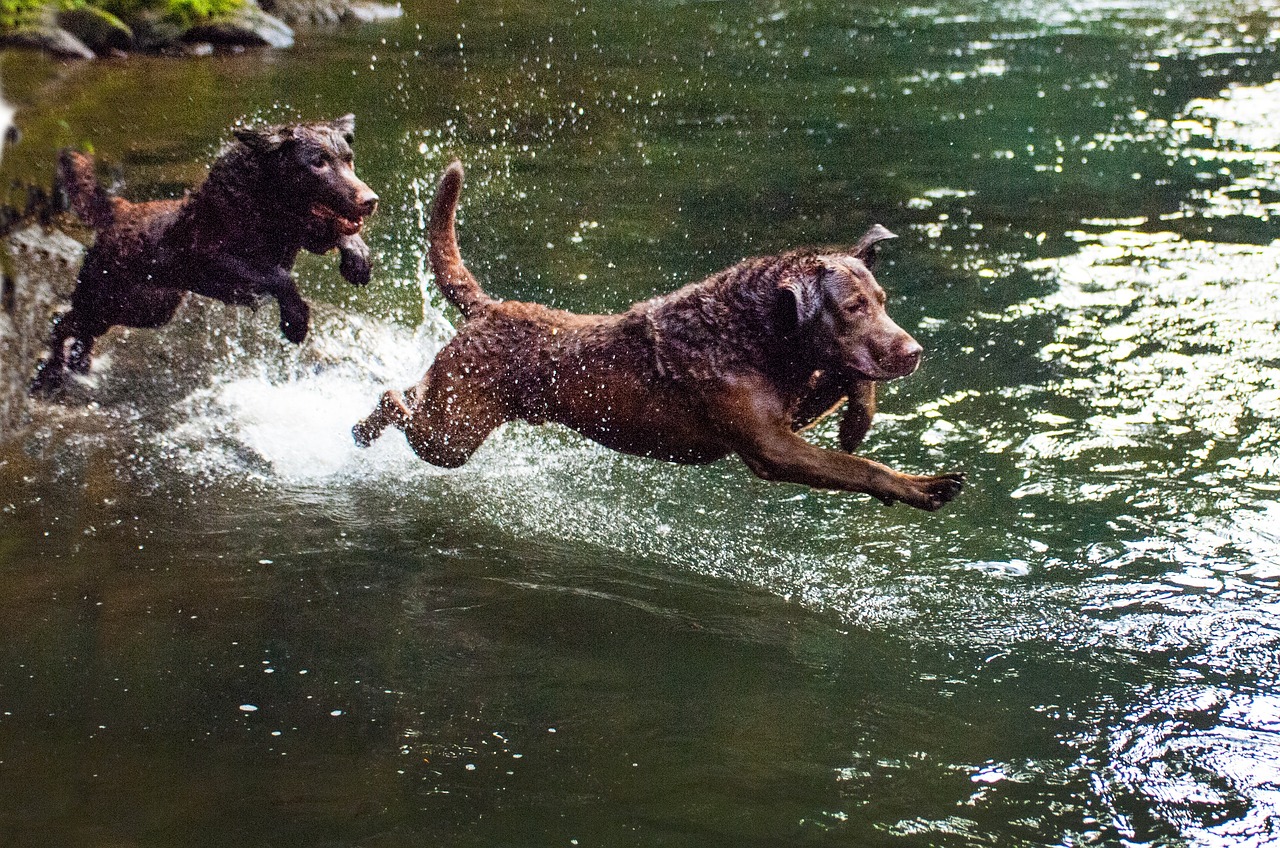The Chesapeake Bay Retriever, often simply referred to as the “Chessie,” is known for its love of water, undying loyalty, and protective nature. But, are Chesapeake Bay Retrievers aggressive? To fully comprehend this breed’s temperament, one must delve into its history, understand the factors that influence its behavior, and recognize the importance of proper training and environment.
Chesapeake Bay Retrievers: A Brief History
Chesapeake Bay Retrievers have an intriguing origin story, deeply rooted in the American East Coast, particularly around the Chesapeake Bay area. They were primarily bred for retrieving waterfowl in challenging water conditions. Their history suggests they were bred to be hard-working, determined, and fearless. While these traits make them exceptional working dogs, they can also contribute to the misconceptions surrounding their behavior.
Natural Protective Instincts of Chesapeake Bay Retrievers
It’s essential to differentiate between aggression and protectiveness. Chesapeake Bay Retrievers are known for being extremely loyal and often protective of their families. Their inherent desire to safeguard their loved ones can sometimes be mistaken for aggression. However, it’s more about the Chessie’s innate drive to defend rather than an inherent need to be aggressive.
Training: The Key to a Well-Behaved Chesapeake Bay Retriever
Training plays a pivotal role in how Chesapeake Bay Retrievers behave. Since they are intelligent and determined, they require consistent and early training. Positive reinforcement methods work exceptionally well with this breed.
Socialization: Introducing your Chesapeake Bay Retriever to various environments, situations, and people from a young age can significantly impact how they react as adults. Proper socialization can help them differentiate between a genuine threat and a harmless situation.
Obedience Training: Teaching Chesapeake Bay Retrievers basic commands and ensuring they adhere to them can prevent unwanted behaviors. Their eagerness to please, combined with their intelligence, often makes them fast learners.
Mental Stimulation: Chesapeake Bay Retrievers are thinkers. Providing them with puzzles, games, and regular exercise can prevent boredom, a common trigger for destructive behavior.
The Role of Environment in Shaping a Chesapeake Bay Retriever’s Behavior
A dog’s environment plays an integral role in its behavior. Chesapeake Bay Retrievers are no exception. A chaotic, unpredictable, or hostile environment can contribute to anxiety and stress, leading to reactive behavior.
Stable Home Environment: Ensuring a calm, consistent environment helps Chesapeake Bay Retrievers feel secure.
Exercise and Play: Chesapeake Bay Retrievers have abundant energy. Regular play sessions, walks, and swimming (a favorite activity for many Chessies) can help channel their energy positively.
Positive Reinforcements: Rewarding good behavior and ensuring the Chesapeake Bay Retriever knows its boundaries can establish a harmonious living environment.
Conclusion
Chesapeake Bay Retrievers, with their loyal, protective nature, can sometimes be misunderstood as aggressive. However, with proper training, a stable environment, and an understanding of their inherent traits, these dogs can be the loving and reliable companions they’re known to be. Recognizing the importance of early socialization, consistent training, and a stable environment can ensure a harmonious relationship with this unique and loyal breed.
Frequently Asked Questions About Chesapeake Bay Retrievers & Aggression

1. Are Chesapeake Bay Retrievers naturally aggressive dogs?
Chesapeake Bay Retrievers are not inherently aggressive. However, they possess a natural protective instinct due to their history as working dogs. This protective behavior can sometimes be mistaken for aggression, especially if not understood or managed correctly.
2. What contributes to aggressive behavior in Chesapeake Bay Retrievers?
Multiple factors can contribute, including lack of socialization, inadequate training, a hostile environment, or past traumatic experiences. Proper training and a stable environment can significantly reduce aggressive tendencies.
3. How does early socialization influence the behavior of Chesapeake Bay Retrievers?
Early socialization helps Chesapeake Bay Retrievers differentiate between genuine threats and harmless situations. Exposing them to various environments, people, and situations from a young age can result in a well-adjusted and sociable adult dog.
4. How essential is training for preventing aggressive behavior in Chesapeake Bay Retrievers?
Training is pivotal. Chesapeake Bay Retrievers are intelligent and thrive on consistency. Regular, positive reinforcement-based training from a young age can prevent unwanted behaviors and ensure they understand their boundaries.
5. Can Chesapeake Bay Retrievers from rescues or shelters exhibit aggressive behavior?
While some Chesapeake Bay Retrievers from shelters might exhibit aggressive or defensive behaviors due to past traumas, many adjust well with time, understanding, and training. Adopting from a rescue or shelter can be highly rewarding, as you give a dog a second chance. These organizations often provide insights into a dog’s behavior, which can be invaluable.
6. How does the home environment influence a Chesapeake Bay Retriever’s temperament?
A stable, calm home environment plays a vital role in a dog’s behavior. An unpredictable or chaotic setting can lead to anxiety in Chesapeake Bay Retrievers, which may result in reactive behavior. Regular play and exercise in a consistent environment can mitigate such behaviors.
7. Are male Chesapeake Bay Retrievers more aggressive than females?
The aggression is not necessarily tied to gender. Both male and female Chesapeake Bay Retrievers can exhibit protective behavior. Proper training and socialization are more influential factors in managing aggression than the dog’s gender.
8. How can owners correct unwanted aggressive behaviors in their Chesapeake Bay Retrievers?
Consistent training, positive reinforcement, and professional guidance (if needed) are crucial. Addressing the root cause of aggression, whether it’s fear, territoriality, or dominance, will help in implementing effective corrective measures.
9. How do Chesapeake Bay Retrievers usually react to strangers?
Given their protective nature, Chesapeake Bay Retrievers can be wary of strangers. However, with proper socialization, they can learn to discern between friendly visitors and potential threats, ensuring a more measured response to unfamiliar faces.
10. Can adopting a Chesapeake Bay Retriever from a rescue reduce the chances of aggressive behavior?
Adopting a Chesapeake Bay Retriever from a rescue or shelter can be a rewarding experience. These dogs often crave stability, and once they find it, they can become incredibly loyal and loving. Many rescues and shelters also offer post-adoption support to ensure the transition is smooth and any behavioral challenges are addressed.

